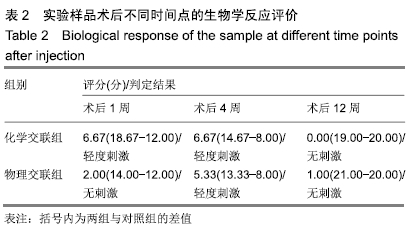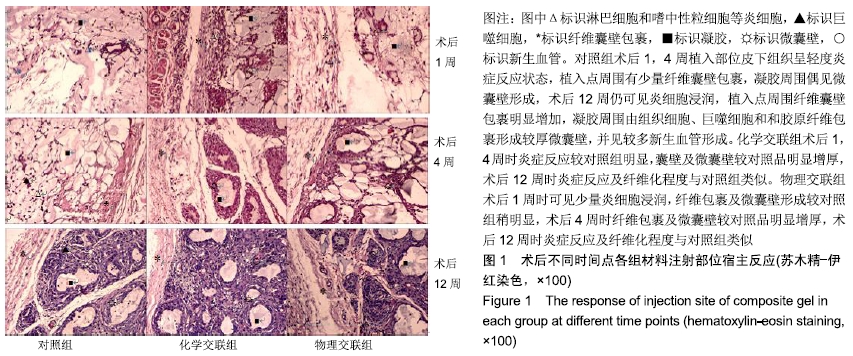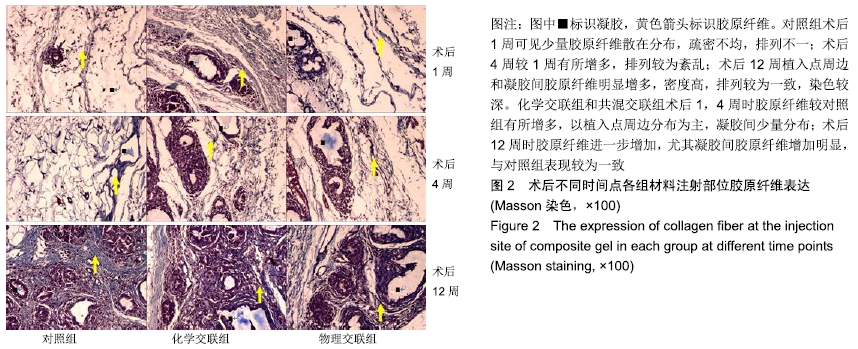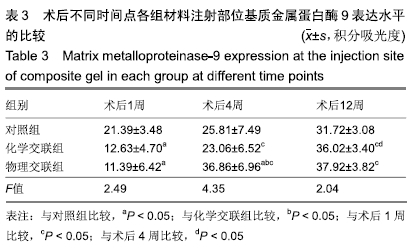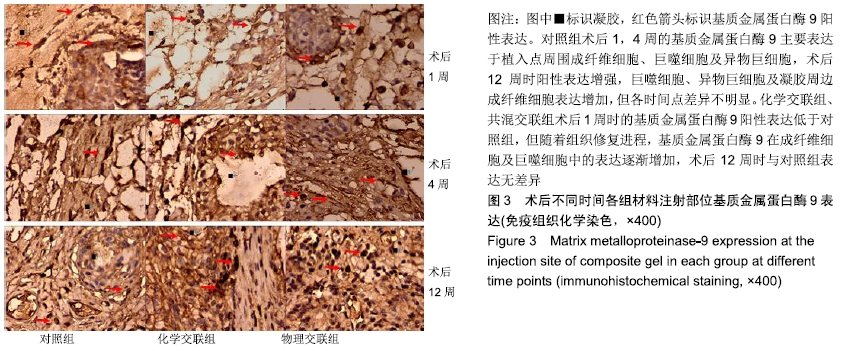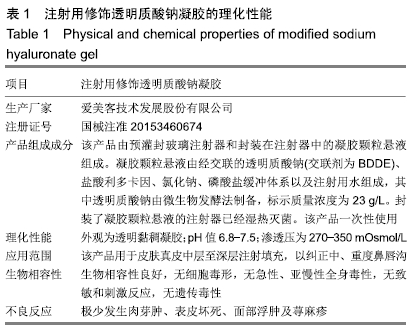中国组织工程研究 ›› 2020, Vol. 24 ›› Issue (10): 1557-1562.doi: 10.3969/j.issn.2095-4344.2243
• 细胞外基质材料 extracellular matrix materials • 上一篇 下一篇
不同交联透明质酸复合凝胶在体内的宿主反应及基质金属蛋白酶9表达
聂 卫1,刘伟伟1,刘大卫1,崔晓雪1,刘山海1,李 旭1,肖光礼1,王世炜2,牛换云2,李睿智2
- 1天津市医药科学研究所,天津市 300020;2爱美客技术发展股份有限公司,北京市 100022
Host response of different cross-linked hyaluronic acid composite gels and matrix metalloproteinase-9 expression
Nie Wei1, Liu Weiwei1, Liu Dawei1, Cui Xiaoxue1, Liu Shanhai1, Li Xu1, Xiao Guangli1, Wang Shiwei2, Niu Huanyun2, Li Ruizhi2
- 1Tianjin Institute of Medical and Pharmaceutical Sciences, Tianjin 300020, China; 2IMEIK Technology Development Co., Ltd, Beijing 100022, China
摘要:
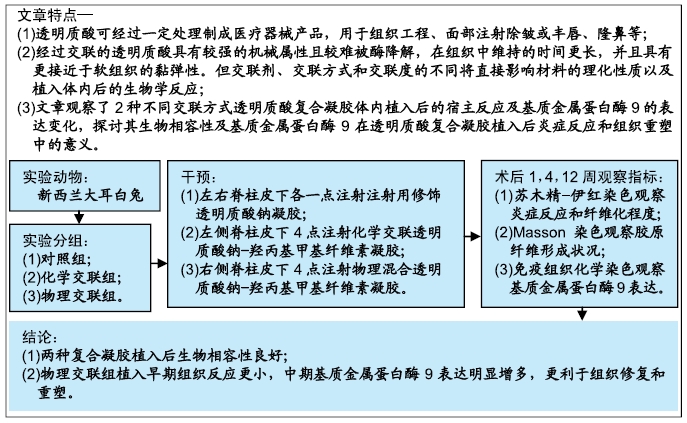
文题释义:
宿主反应:指生物材料或组织工程产品植入体内后引起的机体反应,包括植入部位的局部反应和全身反应。宿主反应是一把双刃剑,可引起全身毒性、过敏、致畸、致癌、溶血、凝血,炎症、过度纤维化等;但也可提供一种环境或支撑,适当的纤维组织增生促进组织的修复或重构。如何调控机体宿主反应向组织修复方向发展,是生物材料发展的方向,也是研究的热点。
基质金属蛋白酶9:属基质金属蛋白酶家族的明胶酶,可降解和重塑细胞外基质的动态平衡,参与伤口愈合、异物反应、炎症、血管生成和组织重塑,可在炎症早期阶段上调表达,促进可降解材料宿主组织的整合和修复。其在生物材料表面巨噬细胞内高表达,而且参与巨噬细胞融合、异物巨细胞形成和异物反应,还可以调节细胞外基质组分和各种因子,从而引起细胞外环境及纤维包囊和血管生成的改变,对于研究生物材料体内组织修复过程有重要意义。
背景:利用羟丙基甲基纤维素分子内的羟基与透明质酸中的羟基、羧基发生相互作用,可降低透明质酸的酶解,提高其作为皮肤填充材料的可使用性。
目的:观察不同交联方式透明质酸复合凝胶体内植入后的宿主反应及基质金属蛋白酶9表达变化。
方法:取新西兰大耳白兔(购自北京隆安实验动物养殖中心)12只,在其脊柱两侧皮下共注射10个点,左侧4点注射化学交联透明质酸钠-羟丙基甲基纤维素凝胶(化学交联组),右侧4点注射物理混合透明质酸钠-羟丙基甲基纤维素凝胶(物理交联组),左右侧各一点注射已上市注射用修饰透明质酸钠凝胶(对照组)。注射后1,4,12周分别切取包括植入材料在内的皮下组织,苏木精-伊红染色观察炎症反应和纤维化程度,Masson染色观察胶原纤维形成状况,免疫组织化学染色观察基质金属蛋白酶9表达变化。实验经天津市医药科学研究所动物伦理委员会批准(批准号:IMPS-EAEP-H-2017030)。
结果与结论:①苏木精-伊红染色:化学交联组注射后1,4周时的炎症反应较对照组明显,囊壁及微囊壁较对照组增厚,注射后12周时炎症反应及纤维化程度与对照组类似;物理交联组注射后1周时可见少量炎细胞浸润,纤维包裹及微囊壁形成较对照组稍明显,注射后4周时纤维包裹及微囊壁较对照组增厚,注射后12周时炎症反应及纤维化程度与对照组类似;②Masson染色:化学交联组与物理交联组注射后1,4周时的胶原纤维较对照组增多,12周时胶原纤维进一步增加,与对照组无差异;③免疫组织化学染色:化学交联组注射后1周的基质金属蛋白酶9阳性表达低于对照组,其余时间点与对照组无差异;物理交联组注射后1周的基质金属蛋白酶9阳性表达低于对照组,注射后4周的阳性表达高于对照组,注射后12周与对照组无差异;④结果表明:两种交联透明质酸钠复合凝胶皮下植入后12周内的生物相容性良好,胶原纤维生成和基质金属蛋白酶9表达逐步增加,有利于组织重塑的进行,并且物理交联的样品植入早期组织反应更小,中期基质金属蛋白酶9表达明显增多,更利于组织修复和重塑。
ORCID: 0000-0002-1774-6808(聂卫)
中国组织工程研究杂志出版内容重点:生物材料;骨生物材料; 口腔生物材料; 纳米材料; 缓释材料; 材料相容性;组织工程
中图分类号:
